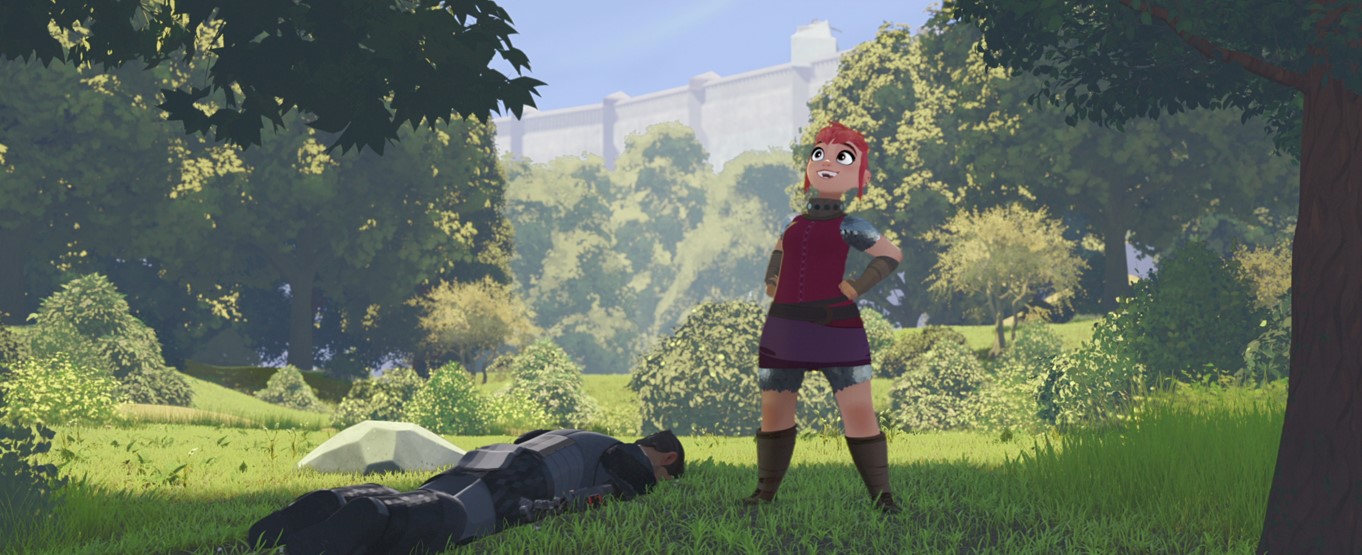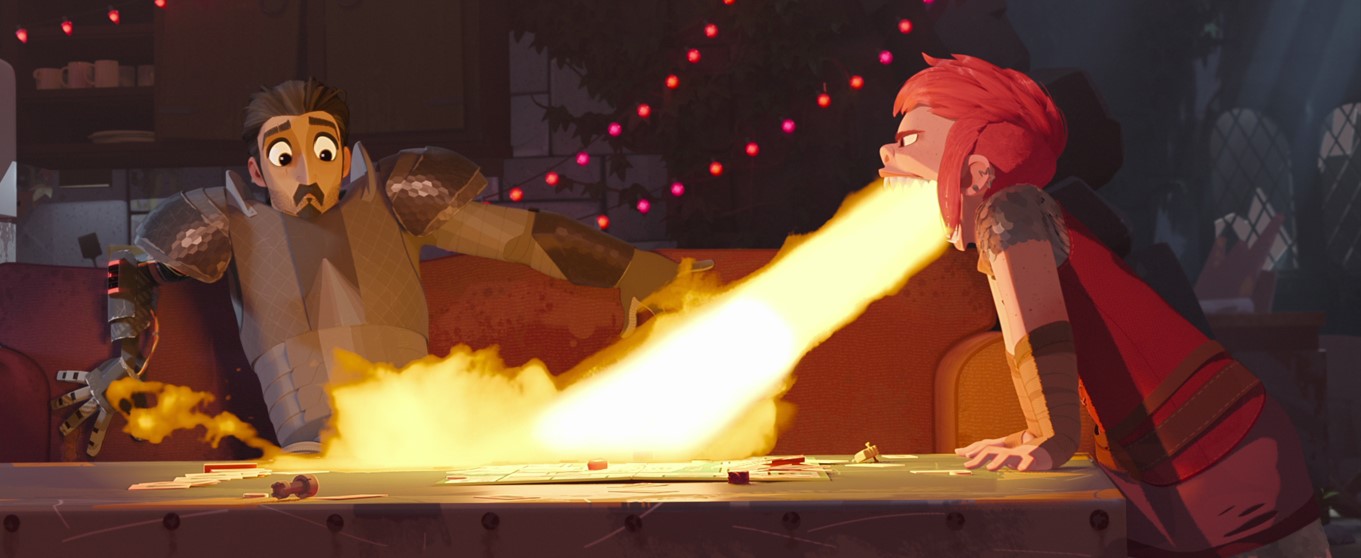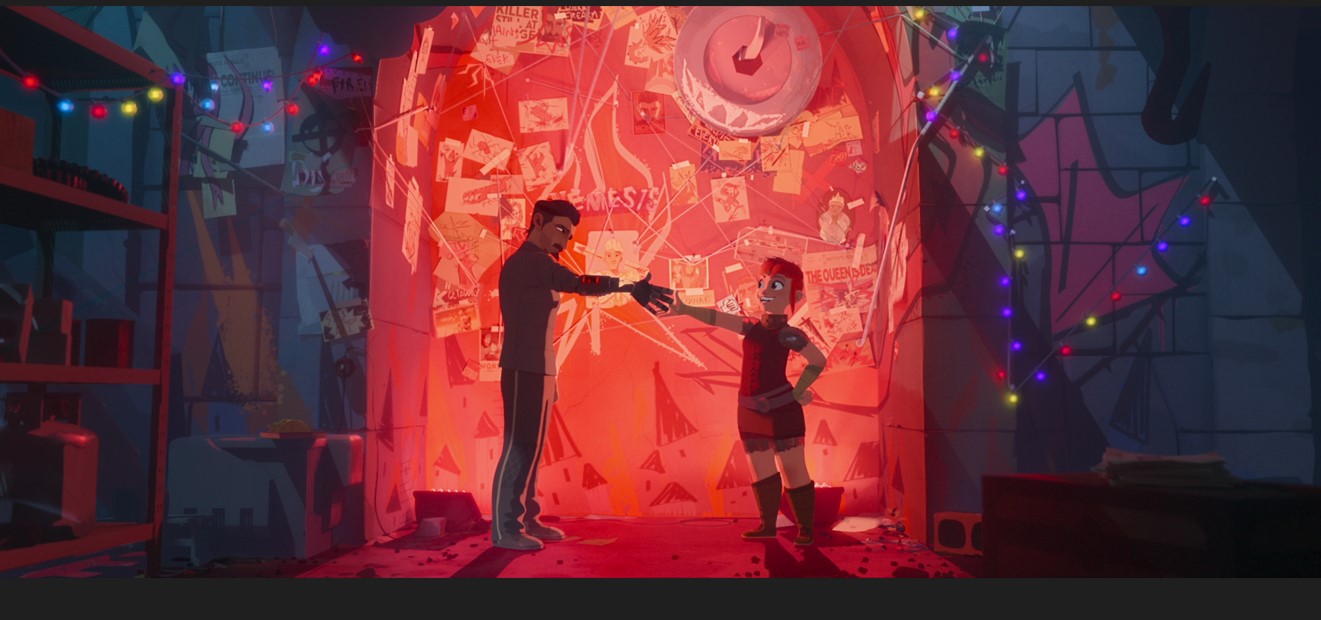While watching ‘Nimona,’ a Netflix animated film, the viewers are bound to think that this belongs in the theaters, but given the circumstances it had to overcome and the themes it deals with, it’s probably for the best that it found a home at Netflix. Based on the iconic Eisner Award-winning 2015 graphic novel of the same name (initially published as a webcomic on Tumblr between June 2012 and September 2014) by ND Stevenson, the film was originally in development at Blue Sky Studios, with Patrick Osborne serving as the director. After the Walt Disney Company acquired Blue Sky’s parent company, 21st Century Fox, the production got a pushback reportedly for the LGBTQ+ themes. Eventually, Annapurna Pictures took over the project, hiring Nick Bruno and Troy Quane as directors and releasing the film on Netflix.

Premiering at the tail end of the 2023 Pride Month, ‘Nimona’ lives up to its phoenix-esque origin story in more ways than one. The plot is set in what seems like a purposefully unnamed kingdom, where, a thousand years ago, a great knight named Gloreth defeated an evil and destructive monster with countless eyes. Afterward, a wall was built on her instructions to protect the kingdom from the dangers of the world beyond. Gloreth also established an elite order of knights known as the Institute to serve as the protectors of the realm and decreed that only the descendants of these knights would be able to join the order in the future.
In the present day, Queen Valerin (Lorraine Toussaint) goes against the will of Gloreth and a millennium-old tradition to recruit Ballister Boldheart (Riz Ahmed), a bright-eyed commoner with dreams of glory, for the Institute. However, during the knighthood ceremony, Ballister’s sword suddenly activates and kills the queen, turning him into a murder suspect. He discovers that the media and the people cheering for him until recently have turned against him, regarding him with the same dread as the perceived monsters beyond the wall and believing he is proof of why the Will of Gloreth was formatted in the way it was.

This is when Ballister meets the eponymous character (Chloë Grace Moretz), a shapeshifter with a mysterious past who likes to incite chaos wherever she goes. With everyone in the kingdom turned against him, including his lover Ambrosius Goldenloin (Eugene Lee Yang), Ballister reluctantly accepts Nimona’s help as he sets out to clear his name.
‘Nimona’ is a visually beautiful film. The animation is seamless and kinetic, reminiscent of the 1990s Disney animated movies. It has some great moments of physical humor and sight gags, again reminding the audience of the Disney animated features of the 1990s. Despite drawing inspiration from those stories rooted in classic fairytales and mythologies, ‘Nimona’ subverts the tropes found in those projects as it narrates a tale of fluid identity, non-conformity, and challenging those in power.
In many ways, the nameless kingdom is a metaphor for the world we live in now, particularly the US. The setting, an amalgamation of science fiction and fantasy, allows the filmmakers to be bold with their choices when it comes to worldbuilding while keeping the film’s lore grounded in relatively low fantasy. This is one of the two reasons why it is believable for a society to have flying cars, media overexposure, and futuristic swords and still be afraid of what lies beyond the wall. The other reason is that there is an abundance of examples of similar situations in our real world.
There is a brief scene early in the film that accurately depicts how ingrained prejudice can be. In the hours leading up to the knighthood ceremony, people are asked about their opinions on Ballister becoming a knight of the Institute, and they are almost exclusively negative. These people seem to belong to the same social status as Ballister, but institutionalized discrimination has been there for so long that people don’t have any problem being exploited and kept away from positions of authority. Even Ballister isn’t initially exempt from this, making Nimona remark how “brainwashed” he seems.

‘Nimona’ adopts the motifs found in the ‘Shrek’ and ‘How to Train Your Dragon’ films and takes them several steps further. The subdued elements of a same-sex relationship in ND Stevenson’s source material are celebrated in the movie. Ballister is in a happy, loving relationship with Ambrosius until things go horribly wrong at the knighthood ceremony. His transition from hero to villain and back to hero again underscores the absurdity of such labels. Nimona and her fight against the Institute are metaphors for gender fluidity and the struggles the people who don’t fit in the set norms of society encounter in their everyday lives.
If there is one problem with the film, it is its predictability. Once it becomes clear who plays what role in the narrative, ‘Nimona’ can appear pretty straightforward. The first ‘Shrek’ film came out in 2001, and the first ‘How to Train Your Dragon’ in 2010. In the intermediate period, quite a few movies have experimented with similar subversive tropes, and ‘Nimona’ doesn’t necessarily stand out among them.

However, ‘Nimona’ offers a fulfilling cinematic experience. It makes up for its minor narrative shortcomings with a thoughtful exploration of morality, identity, and sexuality. It’s also an enjoyable animated film held together by Moretz and Ahmed’s incredible voice-acting.
Rating: 4/5
Read More: Best Animated Movies


You must be logged in to post a comment.